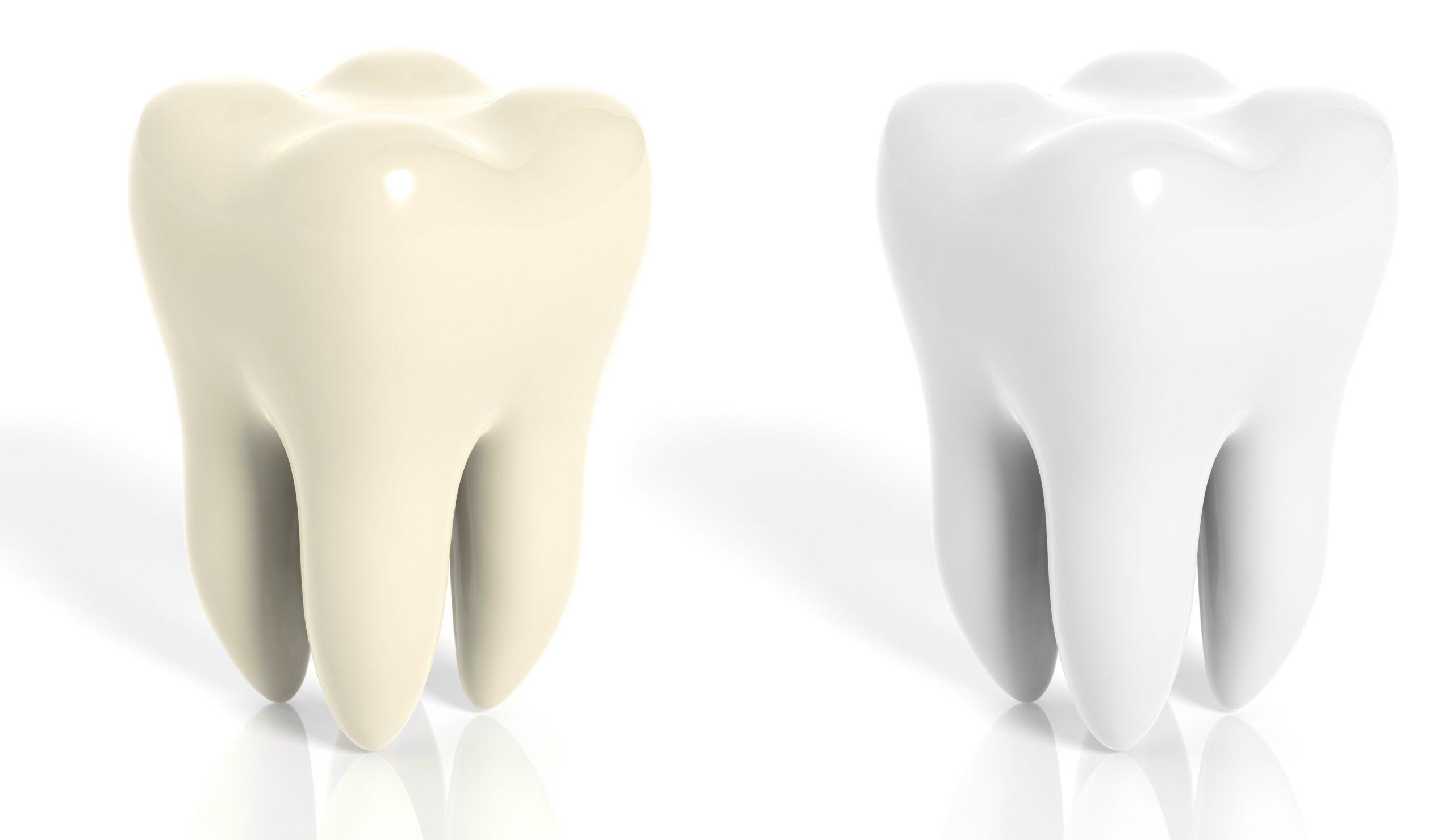
A radiant, white smile not only seems amazing but it also signifies good oral health. Unfortunately, tooth stains can make you feel self-conscious and uncomfortable by detracting the appearance of your teeth. Understanding the causes of tooth stains and how to prevent them is essential for maintaining a bright smile.
We will explore the various factors that lead to teeth stains, preventive measures you can take, and the treatments available like teeth whitening in SW Calgary to restore your teeth to their natural brilliance.
Understanding Teeth Discoloration?
The term “teeth discoloration” refers to a change in the natural color of teeth, which affects how they appear. The enamel, the tooth’s outer layer, and the underlying dentin, which makes up the tooth’s interior structure, can be damaged by discoloration. It can appear in various shades, including gray, blue, green, and yellow.
Types of Tooth Discoloration
Extrinsic Stains
These surface-level stains on teeth are often brought on by external factors. Extrinsic stains are often caused by:
- Diet: Consuming foods and drinks with pigments, such as coffee, tea, red wine, cola, and berries, can cause teeth stains over time.
- Use of tobacco: Smoking or chewing tobacco exposes the teeth to nicotine and tar, resulting in long-lasting yellow or brown stains.
- Poor Oral Hygiene: Poor brushing and flossing techniques can lead to plaque and tartar buildup, which can give the appearance of discolored teeth.
Intrinsic Stains
These stains are more difficult to remove because they develop inside the tooth structure. The following factors may cause intrinsic discoloration:
- Dental trauma: A blow to the tooth can damage the interior blood vessels and nerves, which will discolor the tooth.
- Drugs: Taking certain medications during the development of a child’s teeth, particularly tetracycline antibiotics, can result in intrinsic staining.
- Fluorosis: Too much fluoride consumption during tooth development can result in brown or white stains on the teeth.
- Age: Our teeth naturally lose some of their enamel as we get older, which can make the yellowish dentin underneath more noticeable and cause discoloration.
Genetic Factors
Some people may have naturally darker or more translucent teeth due to a genetic predisposition, which makes them more prone to staining.
Medical Conditions
Chemotherapy, for example, has been shown to have an adverse effect on tooth enamel and result in discoloration.
Environmental Factors
Exposure to high levels of minerals, such as iron or manganese, in drinking water can lead to tooth discoloration.
Causes of Teeth Stains
- Staining Foods and Beverages: Due to pigments and other elements that can stick to tooth enamel, consuming particular foods and beverages can cause teeth to become discolored. Coffee, tea, red wine, cola, berries, soy sauce, and curry are a few examples.
- Tobacco Use: Smoking or chewing tobacco exposes the teeth to nicotine and tar, which over time may leave behind persistent yellow or brown stains.
- Poor Oral Hygiene: Poor brushing and flossing techniques can cause plaque and tartar to build up on the teeth, discoloration and staining the surface of the teeth.
- Acidic Foods and Drinks: Citrus fruits, vinegar, and sports drinks are examples of acidic meals and beverages that can erode tooth enamel, leaving teeth more prone to stains from other foods and beverages.
- Aging: The enamel on people’s teeth naturally thins with age, exposing the yellowish dentin below. Over time, this may cause teeth to seem increasingly discolored.
- Genetics: Some people tend to have naturally darker or more transparent enamel, which makes them more stain-prone.
- Medications: Certain drugs can cause intrinsic staining, which results in tooth discolouration, especially antibiotics containing tetracycline when used during the development of the tooth in childhood.
- Fluorosis: Too much fluoride during tooth development, often from water sources or fluoride supplements, can leave teeth stained either white or brown.
- Dental Trauma: A tooth’s nerve and blood vessels can be damaged by a traumatic injury, which over time may cause the tooth to darken or become discolored.
- Medical Conditions and Treatments: Chemotherapy or radiation therapy to the head and neck area are two medical conditions that can alter tooth enamel and discolor it.
- Environmental Factors: Tooth discolouration can result from exposure to high concentrations of minerals in drinking water, such as iron or manganese.
- Dental Restorations: Metal crowns and amalgam (silver) fillings are two dental restorations that might cause tooth discolouration over time.
How to Remove Teeth Stains
Professional Teeth Whitening
In-Office Whitening
Dentists can use hydrogen peroxide or carbamide peroxide gels for in-office teeth whitening near you, enhancing the whitening effect using specialized lights or lasers. This method provides quick and significant results in a single visit.
At-Home Whitening Kits
Dentists can provide at-home whitening solutions and custom-fitted trays. These kits can progressively whiten teeth and are normally used for a few weeks.
Over-the-Counter Whitening Products
Whitening Toothpaste
To assist in removing surface stains, whitening toothpaste contains abrasive ingredients and safe materials. They can be useful for minor stains, but they don’t work as well as expert solutions for more severe discoloration.
Whitening Strips and Gels
The components in over-the-counter whitening solutions like strips and gels often have a peroxide basis. Compared to expert treatments, they may take longer to show effects that are apparent for some surface stains.
Dental Bonding
Dental bonding includes coating discolored teeth with a resin that matches their natural color and shaping and polishing the resin to match the surrounding teeth. It works well for minimal stains and can make you seem better pretty quickly.
Veneers
Porcelain veneers are thin, customized shells that cover the front of teeth. They offer a solution for concealing obvious stains and may result in a permanent, whiter appearance.
Laser Teeth Whitening
An in-office procedure called laser teeth whitening involves the use of a laser to increase the effectiveness of the whitening gel. Comparing this procedure to conventional professional whitening could result in quicker and sometimes more dramatic results.
Proper Oral Hygiene
Surface stains can be avoided by practicing good oral hygiene, such as routine brushing and flossing. Maintaining a whiter smile can also be made easier by using fluoride-containing whitening toothpaste.
Dietary Modifications
Limit your consumption of foods and drinks that might leave stains, such as dark-colored sauces, coffee, tea, and red wine. After consuming these items, drink water to help wash the pigments away.
Regular Dental Check-ups
Visit the dentist SW Calgary for regular cleanings and examinations. Dental specialists can spot stains, treat them, and offer recommendations on how to maintain a white smile.
Quit Smoking and Tobacco Use
Giving up tobacco products and smoking not only enhances overall wellness but also prevents teeth from becoming progressively stained.
Get the Smile You Deserve!
We at Glamorgan Dental are committed to assisting you in obtaining the smile you’ve always desired. Our skilled dentist near you is dedicated to giving you exceptional dental services as well as a wide range of cosmetic dentistry procedures that are tailored to your specific needs. Whether you’re looking to whiten your teeth, address dental stains, or enhance your overall oral health, we’ve got you covered.
Don’t wait any longer to transform your smile; schedule an appointment with us and get started!







